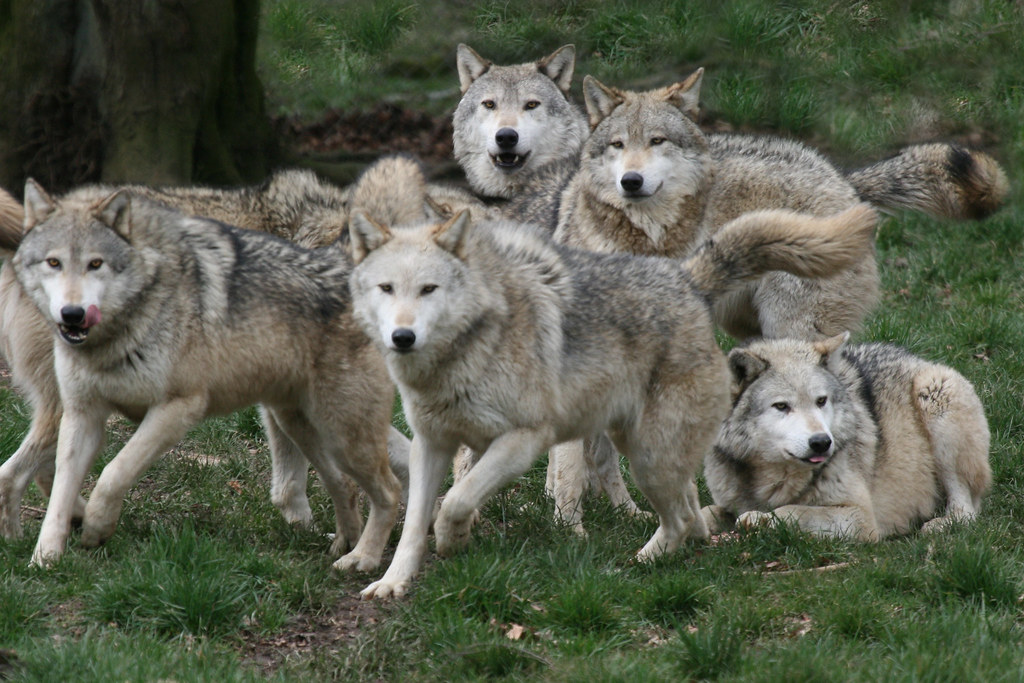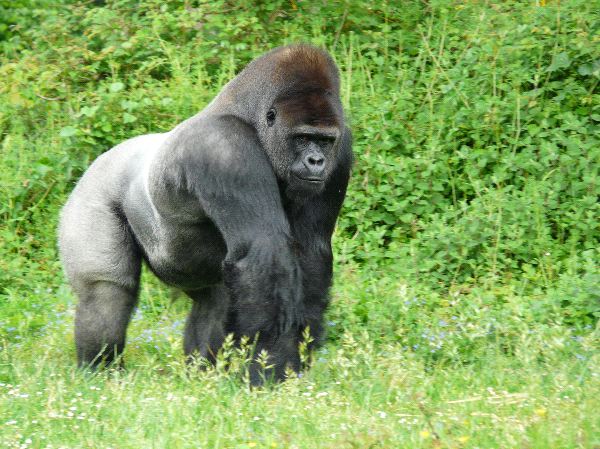Post by rock on May 1, 2019 4:59:13 GMT 5
Grey Wolf - Canis lupus
The Grey Wolf (Canis lupus) is the largest wild canid, males averaging between 70 and 110 pounds depending on subspecies. The Wolf has a specialized body that has made it one of the world's most efficient hunters. Its powerful neck is a very important adaptation: it has to be strong to support the wolf's large head and is crucial for bringing down prey. The skull is 31cm (12 inches) long and is armed with an impressive array of large canines and carnassial teeth which, when coupled with huge jaw muscles that are evident from the large sagittal crest and wide zygomatic arches, give it an incredible biteforce that is strong enough to break the bones of prey and even crack the femur of moose. Wolves primarily feed on medium to large sized ungulates (up to the size of bison 10–15 times larger than themselves), though they are not fussy eaters. Medium and small sized animals that may supplement the diet of wolves include marmots, beaver, hares, badgers, foxes, weasels, ground squirrels, mice, hamsters, voles and other rodents, as well as insectivores.
![]()

silverback gorilla
The western gorilla (Gorilla gorilla) is a great ape and the most populous species of the genus Gorilla.
The western gorilla is slightly smaller, lighter, more slender and clearer dyed than its eastern cousin. The western lowland gorilla can be brown or greyish with a yellowish forehead. It also has an overhanging tip on its nose, which the eastern gorilla does not have. Males measure 160–170 cm (5.3-5.6 ft) and weigh 140–160 kg (308-352 lbs). Females measure 120–140 cm (4-4.6 ft) and weigh 60–80 kg (132-176 lbs). The western gorilla is the smaller species of the gorilla. The Cross River gorilla differs from the western lowland gorilla in both skull and tooth dimensions. It is also about 10–15 cm (4-6 in) taller and 20–35 kg (44-77 lbs) heavier, but still smaller and lighter than the mountain gorilla and the eastern lowland gorilla, latter the largest subspecies of the gorilla and the largest living primate.

The Grey Wolf (Canis lupus) is the largest wild canid, males averaging between 70 and 110 pounds depending on subspecies. The Wolf has a specialized body that has made it one of the world's most efficient hunters. Its powerful neck is a very important adaptation: it has to be strong to support the wolf's large head and is crucial for bringing down prey. The skull is 31cm (12 inches) long and is armed with an impressive array of large canines and carnassial teeth which, when coupled with huge jaw muscles that are evident from the large sagittal crest and wide zygomatic arches, give it an incredible biteforce that is strong enough to break the bones of prey and even crack the femur of moose. Wolves primarily feed on medium to large sized ungulates (up to the size of bison 10–15 times larger than themselves), though they are not fussy eaters. Medium and small sized animals that may supplement the diet of wolves include marmots, beaver, hares, badgers, foxes, weasels, ground squirrels, mice, hamsters, voles and other rodents, as well as insectivores.

silverback gorilla
The western gorilla (Gorilla gorilla) is a great ape and the most populous species of the genus Gorilla.
The western gorilla is slightly smaller, lighter, more slender and clearer dyed than its eastern cousin. The western lowland gorilla can be brown or greyish with a yellowish forehead. It also has an overhanging tip on its nose, which the eastern gorilla does not have. Males measure 160–170 cm (5.3-5.6 ft) and weigh 140–160 kg (308-352 lbs). Females measure 120–140 cm (4-4.6 ft) and weigh 60–80 kg (132-176 lbs). The western gorilla is the smaller species of the gorilla. The Cross River gorilla differs from the western lowland gorilla in both skull and tooth dimensions. It is also about 10–15 cm (4-6 in) taller and 20–35 kg (44-77 lbs) heavier, but still smaller and lighter than the mountain gorilla and the eastern lowland gorilla, latter the largest subspecies of the gorilla and the largest living primate.





